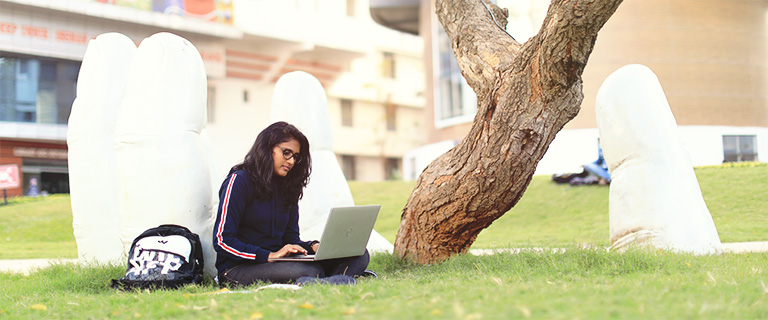CO-CURRICULAR ACTIVITIES
Guest lecture on Space Dreams a reality with Innovation

We the students of the III year Electrical and Electronics Engineering Department (EEE) of New Horizon College of Engineering had the honor to listen to a guest lecture on “Space Dreams a Reality with Innovation” on the 27 September 2019 by a renowned scientist Smt. Anuradha S. Prakasha, a part of ‘Space Ladies’ who worked as an Operations Director at ISRO and these Space Ladies are responsible for ISRO’s latest communication satellite, the GSAT-12.
Dr. Ram KumarS, HOD-EEE, felicitated Anuradha S. Prakasha for the guest lecture, and our faculty coordinators Mr. Joshua Daniel Raj and Mrs. Viji.
In her lecture Anuradha Ma’am discussed the various observations about GSAT-12, the latest communication satellite which provides services like tele-education, tele-medicine, disaster management support and satellite internet access.
She gave us detailedinsightinter alia on:
- The GSAT-12 being equipped with 12 extended C-band transponders
- The different injections operations that were executed as planned and how these operations were carried out
- The various methodologies used of testing in the harsh space conditions
- How a satellite enters an orbit.etc;

Mission MOM:
Mars Orbiter Mission also called Mangalyaan it was India’s first interplanetary mission and made it the fourth space agency to reach Mars after Roscomos, NASA and the European Space Agency, It made India the first Asian nation to reach Martian orbit and the first nation in the world to do so on its maiden attempt. The first three of the five planned orbit raising manoeuvres were completed with nominal results, while the fourth was only partially successful. However, a subsequent supplementary manoeuvre raised the orbit to the intended altitude aimed for in the original fourth manoeuvre. A total of six burns were completed while the spacecraft remained in Earth orbit, with a seventh burn conducted on 30 November to insert MOM into a Heliocentric Orbitfor its transit to Mars.
The first orbit-raising manoeuvre was performed when the spacecraft’s 440-newton liquid engine was fired for 416 seconds. With this engine firing, the spacecraft’s apogee was raised to 28,825 km, with a perigee of 252 km. The second orbit raising manoeuvre was performed, with a burn time of 570.6 seconds resulting in an apogee of 40,186 km. The third orbit raising manoeuvre was performed , with a burn time of 707 seconds, resulting in an apogee of 71,636 km.The fourth orbit raising manoeuvre, imparted an incremental velocity of 35 m/s to the spacecraft instead of the planned 135 m/s as a result of underburn by the motor.On 30 November 2013, a 23-minute engine firing initiated the transfer of MOM away from Earth orbit and on heliocentric trajectory toward Mars.


Acknowledgement:
But for the efforts of the management, our HOD and the staff (teaching and non-teaching), we would not have had the wonderful opportunity to listen to and enjoy the company of a great scientist and scholar like Smt. Anuradha, and receive a firsthand blow-by-blow account of how a satellite is constructed and put into space and the various activities it does during its lifecycle. I would like to acknowledge and thank Smt. Anuradha for taking time out of her busy schedule to address us, the management of the New Horizon College of Engineering for facilitating this symposium, our HOD and Professors for encouraging us to attend and benefit and my friends and colleagues of III year EEE for having attended this talk and for having contributed towards its stupendous success.







